Scenario Navigator
In the Scenario Navigator page, you can perform Batch Optimization to optimize multiple Scenarios with multiple datasets, simultaneously. This feature allows parallel execution of runs for combinations of Network Scenario and datasets. This allows you to study the impact of some anticipated or unanticipated situations. This functionality is only available in the Network Design Advanced and Tactical Planning Modules.
All Batch Optimization results are saved automatically, however, they are only available for 30 days, by default. If users need to access these results for a longer period, it is recommended to load the results, navigate to the Results page, and select the page action to Save as Results Dataset.
Note
Scenario Navigator Overview section in How to Use the Application introduces the purpose and benefits of scenario functionality.
Structure Overview section details the hierarchy from individual Scenarios to Network Scenarios and Batch Runs.
Scenario Pages Layout section describes the shared functionality that is common across all types of scenarios.
Workflow
Select Datasets
When you open the Scenarios page without a selected dataset, a dialog displays the available datasets. You can select datasets from this dialog or specify them in the table on the Scenarios page using the  button.
button.
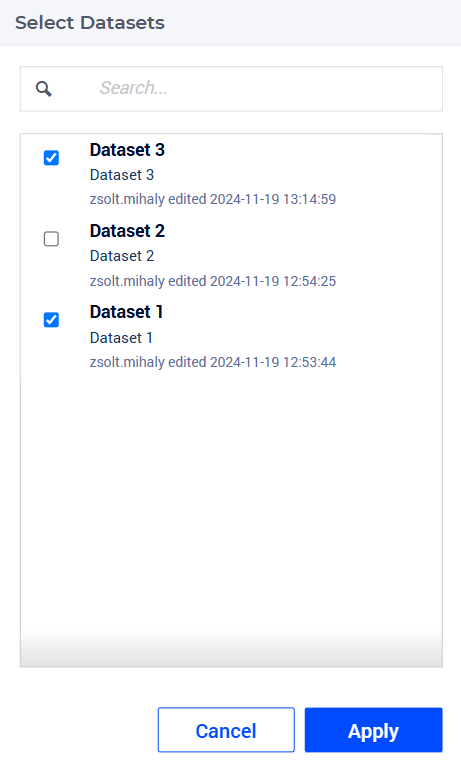
Select Scenarios
Specify which Network Scenarios appear in the table on the Scenarios page using the  button. By default, all Network Scenarios are displayed.
button. By default, all Network Scenarios are displayed.
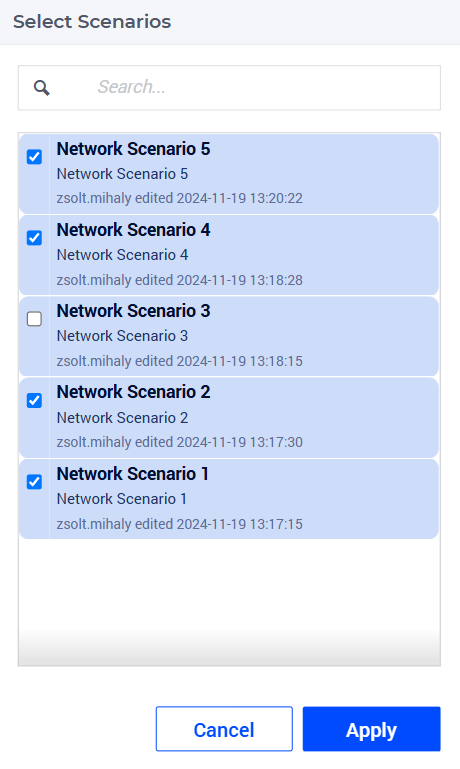
Set Network Scenarios as Favorite
Once datasets are selected, you can find them along with the available Network Scenarios in the Batch Optimization table. Right-click on a Network Scenario cell to mark (or remove) it as a favorite. Favorites are user specific and will be shown at the top of the list of Network Scenarios, allowing users to easily find the Network Scenarios that they regularly run.
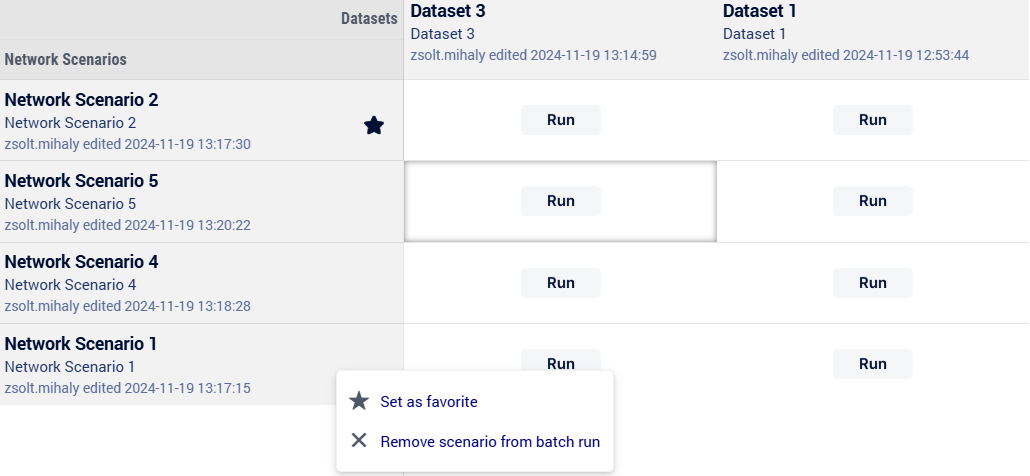
Choose Scenarios to Run
To start running a selected dataset and Network Scenario, click the Run button. You can initiate multiple runs simultaneously by clicking on Run for multiple Network Scenario-dataset combinations, or by selecting multiple cells in the table and pressing the Ctrl + Space keys. During execution, the progress of each dataset and Network Scenario pair is displayed in the table. Active runs will display In Progress instead of the Run button.
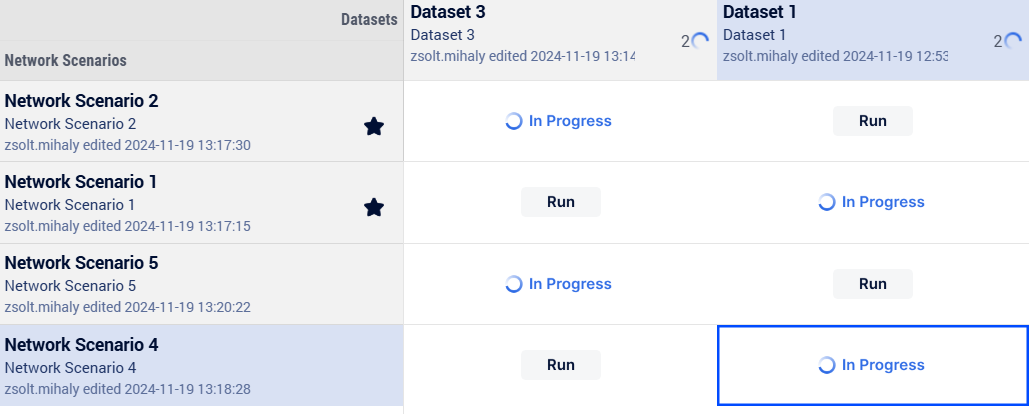
Cancel Scenarios
To stop a Network Scenario from running, hover over the In Progress field to reveal the Cancel option.
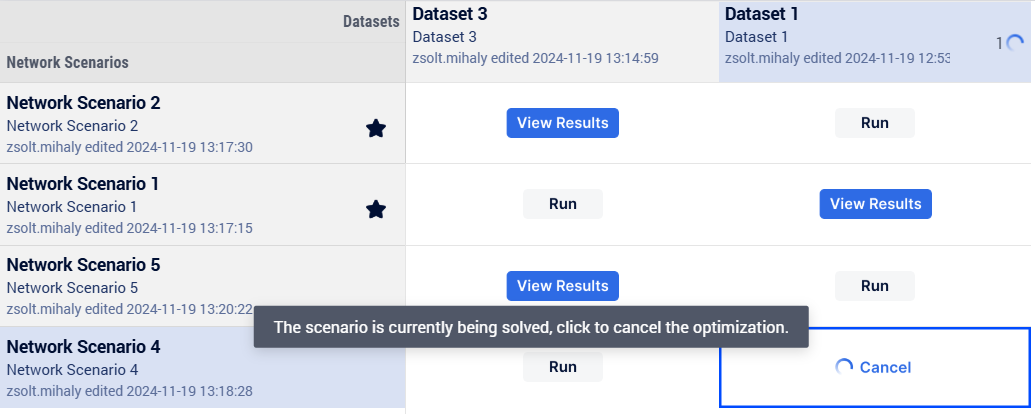
Load Scenario Results
View the results of each run by clicking the  button in the table, which loads the associated Network Scenario and dataset result into the application.
button in the table, which loads the associated Network Scenario and dataset result into the application.
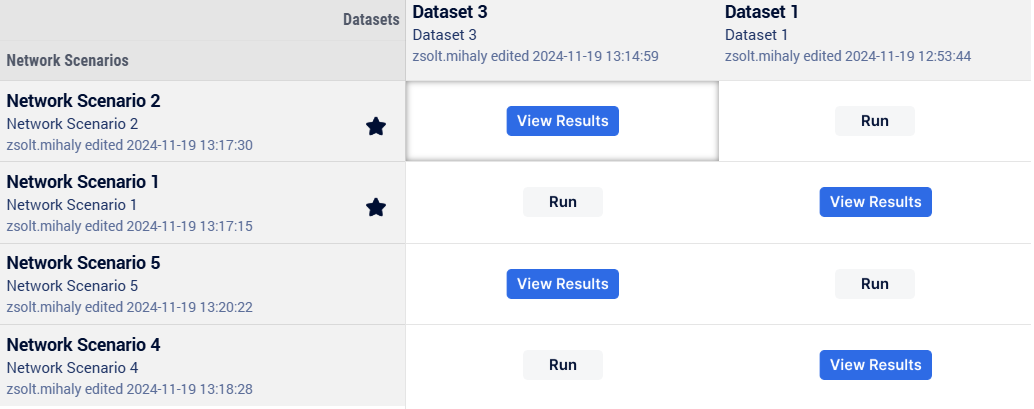
Infeasibilities and Optimization Errors
If an infeasibility occurs during the optimization, the user will be presented with the  button. Clicking on this button will load the Network Scenario and dataset so that the infeasibility can be analyzed.
button. Clicking on this button will load the Network Scenario and dataset so that the infeasibility can be analyzed.
If an error occurs during the optimization, the user will be presented with the  button. Clicking on this button will load the Network Scenario and dataset so that the error can be reproduced. Hovering over the button will show a tooltip that contains more information about the error. When an Optimization Error occurs, it is possible to re-run the Network Scenario by right-clicking on the
button. Clicking on this button will load the Network Scenario and dataset so that the error can be reproduced. Hovering over the button will show a tooltip that contains more information about the error. When an Optimization Error occurs, it is possible to re-run the Network Scenario by right-clicking on the  button and selecting Retry, as shown below.
button and selecting Retry, as shown below.
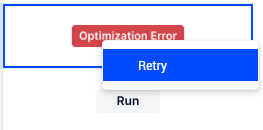
Inspect the Overview
A summary of the Batch Optimization, including the total number of runs (together with single runs) and those in progress, is visible in the status bar. Hover over the summary to display a tooltip with detailed information.

Click on this item in the status bar to open the Overview of Solutions. On the Batch Optimization Runs Overview tab you can see a detailed overview of the Scenarios that were started in this SC Navigator session. This overview shows which runs are in progress, which runs have completed, as well as some high-level results from runs that have been completed. Results can also be loaded from this dialog.

You can switch to the Single Optimization Runs Overview tab page where you can find the previous single runs. You can read more about that dialog page in Number of Completed Runs.
Batch Optimization Options
Clicking on the  button on the top-right of the Scenario Navigator page, will open the following dialog:
button on the top-right of the Scenario Navigator page, will open the following dialog:
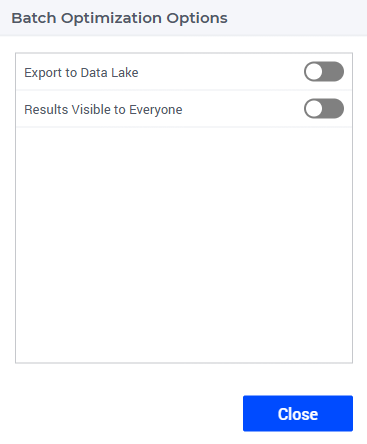
Export to Data Lake: Upon completion of an optimization run, immediately export the results of the run as a Result Dataset in the Data Lake.
Results Visible to Everyone: Make the Results Dataset for completed Network Scenario and dataset runs visible and accessible to all users of this application within your organization, such that other users can load and inspect the results. When this switch is off, only the user who runs the Batch Optimization will see the results.
Both of these settings must be configured before starting a Batch Optimization to ensure they are applied.
Saving Batch Optimization Results
All Batch Optimization results are automatically saved but are only retained for 30 days by default, based on the Retention Settings of the user’s organization. In some cases, not all users will have the necessary rights to change these settings. To keep results longer without changing the Retention Settings, users can permanently save results by loading them, going to the Results page, and selecting the Save as Results Dataset page action. Another way to permanently save the results of a Batch Optimization is to toggle on the Export to Data Lake option before pressing Run. This option can be accessed via a dialog by clicking on the  button on the top-right of the Batch Optimization page.
button on the top-right of the Batch Optimization page.
Download Solutions
Using the  button, you can download an Excel file with the results of all the runs.
button, you can download an Excel file with the results of all the runs.
Scenario Types
The remainder of this chapter provides explanation of each Scenario type, organized by page.